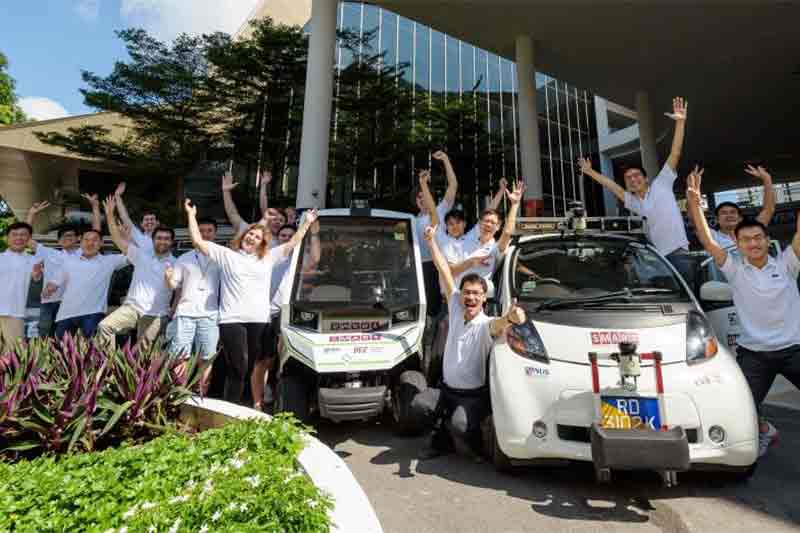
Having celebrated its 50-year milestone last year, Singapore looks set to fast-forward into the future with its headlong push into all things tech. So, what would Singapore look like in another 50 years from now? Daniel Hastings, CEO of Singapore-MIT Alliance of Research and Technology (SMART), gives you a glimpse of what to expect as he recounts past predictions and leverages that to forecast the future.
The future is hard to predict as many pundits have observed.
A review of past predictions of the future show that they got much right, but just as much wrong. Generally, it is easy to make linear predictions on the state of current technology, but by definition, impossible to predict completely new inventions.
Linear predictions
Thus after the second world war, there was a major study done for the nascent US Air Force based on what the Germans and Allies had developed technologically during the war. It was a fifty year look. This study predicted intercontinental ballistic missiles, which were natural extensions of the V-2, the world’s first long-range guided ballistic missile.
It forecasted that computers would be the size of bread boxes, which seemed like a reasonable deduction from computers that filled rooms.
It also foretold long-range unpiloted aircraft. However, it completely missed the laser and all its uses as well as satellite technology such as Global Positioning System (GPS). The laser was not invented until the early sixties and GPS came about in the seventies.
Economics and policies
Likewise after the success of the Apollo program, many futurists felt humanity would be on the Moon and on the way to Mars by the mid-eighties. Of course, this has not happened. The basic reason is economics.
But the technologies that were substantially enhanced by the Apollo program, namely digital electronics, have made enormous changes to our everyday lives.
A journey to Mars, even today would be tremendously costly, while mass production of digital electronics and the invention of the integrated circuit led to the ability to produce useful devices at low cost.
Another example of something that was technologically possible but has not happened is supersonic transport. The Concorde (supersonic passenger jet airliner) and TU-144 (world’s first commercial supersonictransport aircraft) have all been retired. This was due to a combination of economics and environmental policy concerns.
These examples illustrate the fact that evolution of our technological future is a combination of progress in technology, metered with economic and policy issues, and always subject to the invention of disruptive and new technologies.
Global trends and nefarious users
Global trends will also drive what happens. These trends are hard to change and influence the technologies and policies that get adopted. Two long-term trends that seem clear are the relative ageing of society and the effect of ongoing climate change.
Another unhappy truism is that just as technology will be put to good use, there will be people who will find nefarious uses for the technology.
The internet seems to be an example of this with its ability to provide information for good and evil purposes.
With all these caveats, a few predictions seem to be reasonable based on where we are today.
These predictions are based on ongoing research at the Singapore-MIT Alliance for Research and Technology (SMART), funded by the National Research Foundation under its Campus for Research Excellence and Technological Enterprise (CREATE) programme.
Personalized medicine
In the area of biology, the ability to grow and treat cells as well as the ability to economically decode an individual’s genome will lead to a new era of personalized medicine.
It will be possible to take drugs that you know will work on your own cells and DNA. That is because it will already have happened in a lab.
Of course, bacteria and viruses will continue to mutate and be dangerous but rapid genomic sequencing and computational biology will reduce the ability of these microbes to harm us and lead to rapid responses to them as they emerge.
Ubiquitous sensors
One thing that does seem certain, the ability to create and emplace low-cost sensors in many places will increase.
This will lead to vast arrays of cheap sensors which are ubiquitous and the collection of large amounts of data. The processing of this data will lead to increased local knowledge and the corollary of intelligent decisions.
Consider what can be done with cooling systems in a complex building of the thermal inflow and outflow can be measured and reported at many points in the building. Imagine also what can be done if the movement of people throughout the city is known and gates can be open and closed intelligently to channel the flow. Of course, all of these things would have to be done with the strictest attention to privacy and security.
Mobility-on-demand
The increased power of digital circuits and low-cost sensors is also enabling on mobility-on-demand using Autonomous Vehicles.
One might expect to see a large number of robotic vehicles moving around the streets of Singapore, transporting people on-demand. The increased and widespread use of robotics and automation will help people age in place with dignity as well as be highly connected to each other in a manner that is simple and transparent.
Power
Finally, the problem of running out of power for all the digital devices in our lives will be gone. Low power intelligent systems will be all around and will harvest energy from the local environment.
This will render the much-awaited Internet of Things a reality as tiny ultra low-power integrated smart radios, empowered by ultra-power efficient chips, “speak” to each other seamlessly.
These technologies are under development now and will make a better more productive life for Singaporeans in the next fifty years. Barring all the caveats mentioned, of course.
Professor Daniel Hastings is the CEO & Director of SMART. He is also Professor, Aeronautics and Astronautics at MIT.

















